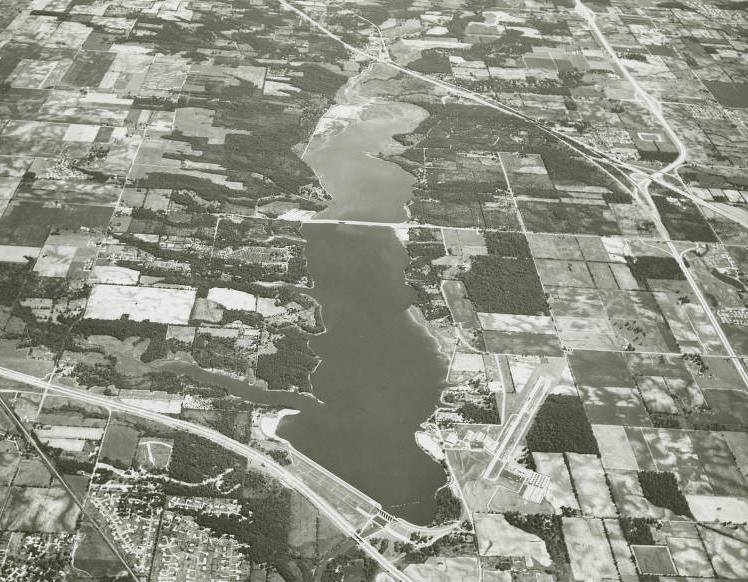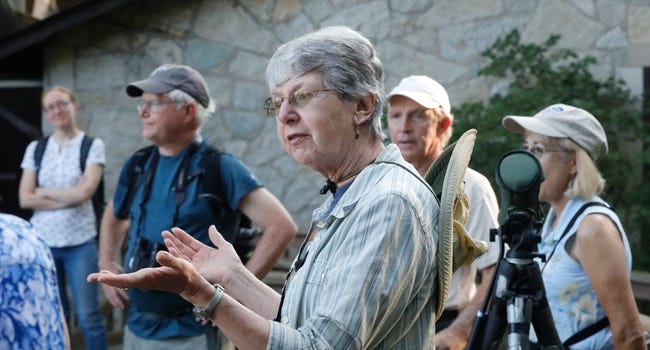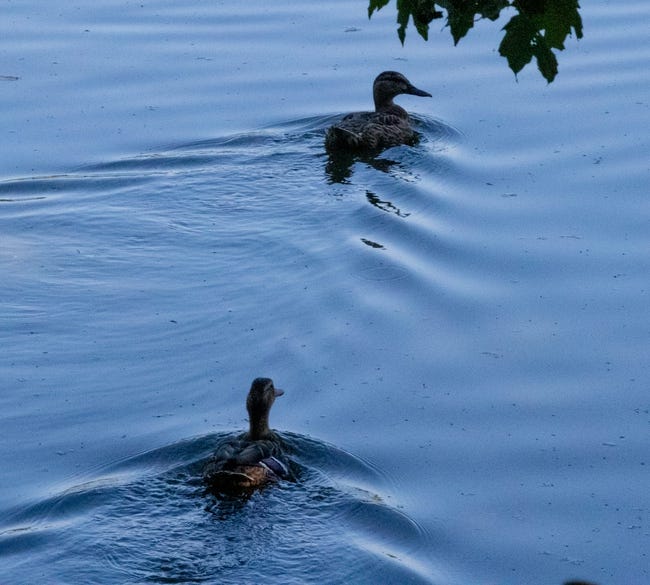Before Eagle Creek Park was a municipal park, it was a 12-acre country estate called Eagle Crest Estate. purchased most of the property currently encompassed by the park in the 1930s. He maintained it as a private nature preserve and had a summer home there. In 1958, Lilly donated the property to Purdue University, which took ownership over a period of five years.

After serious flooding of Eagle Creek in 1957, the city decided to purchase the land from Purdue to construct a reservoir for flood control. By 1966, Indianapolis had purchased over 2,286 acres from Purdue. The dam and reservoir were completed three years later and open to limited use. The park as a whole was not officially open until 1972, dedicated on June 10 by Mayor .
The original development of the park cost approximately $22.5 million and involved a combination of federal and local funds. Facilities constructed included picnic areas, shelters, playgrounds, hiking trails, and a gatehouse at the 56th Street entrance. The Eagle Creek Park Foundation was established in 1979 to continue raising funds for the park.

Throughout the 1980s, more land was acquired. Some land acquisition involved purchasing private property, some of which had been in the hands of the families involved for many years. This land acquisition has not always proceeded smoothly or without hard feelings.
Several facilities were added through the 1980s and 1990s, including a golf course designed by noted golf course architect . Other facilities included the Eagle’s Crest Nature Preserve and the Peace Learning Center. A Water Sports Center, which included training and competition facilities for rowing and sailing, was built for the in 1982 and renovated for the in 1987. In 1992, the estimated park attendance at approximately 300,000.

Eagle Creek Park has dealt with many problems and continues to be concerned with some. These have included mining rights, timber harvesting, development adjacent to park boundaries, environmental stresses, and pollution of the reservoir from its feeder creeks. Deer overpopulation has been a recurring issue, which the Department of Parks and Recreation dealt with through several controlled hunts in the late 2010s. This method of population control drew opposition from city residents and even a lawsuit in 2014.
By 2018, the park attracted over one million visitors each year, taking advantage of more than 1,400 acres of water and 3,900 acres of forest. Eagle Creek Park received a grant in 2018 from the to make more of the park accessible to visitors through the creation of 7 more miles of trail. It is one of the largest municipal parks in the United States.

Help improve this entry
Contribute information, offer corrections, suggest images.
You can also recommend new entries related to this topic.